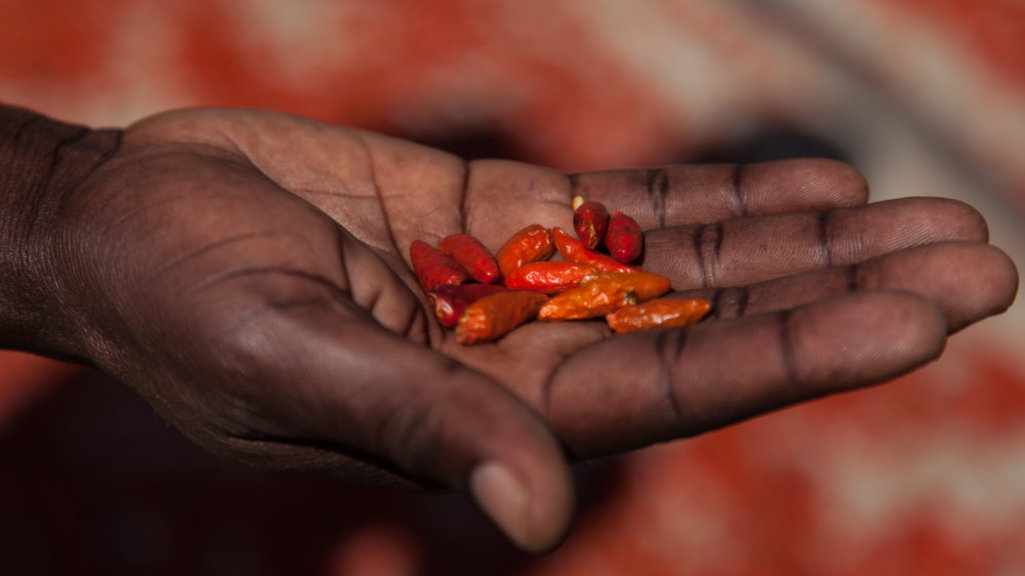Potential of Organic Farming in Africa to feed the World

Among other things, chili is grown as a commercial intercrop in the cultivation project. ©Cotonea
Worldwide, the agricultural usability of soils is dwindling dramatically. According to the United Nations*, 40 percent of global soils are already degraded. However, there are promising prospects in Africa.
The Food and Agriculture Organization (FAO) warns that up to 90% of arable land could be at risk by 2050.* The reasons for soil loss are scientifically proven: Conventional agriculture overuses its own foundation by using artificial fertilizers, genetic engineering, pesticides. The result is a reduction in soil life and reduced fertility. Roland Stelzer, Managing Director of the organic cotton brand Cotonea, experiences the potential that Africa has on an almost daily basis. The company helped to set up a cultivation project in northern Uganda in 2009 and sources some of its organic cotton from there. He says: „Our organic farmers there show that things can be done differently: they have a significantly higher yield than a conventional farmer - even compared to the USA.“
Success story from northern Uganda
The project initiated by the Gulu Agricultural Development Company (GADC) in northern Uganda is in a good starting position: the soil (as in many regions of Africa) has not yet been affected by conventional agriculture.
Through training (organic farming practices to the best standards) and agricultural practices such as crop rotation, multi-crop fields, agroforestry and terrapreta, the farmers can maintain or even improve the soil: Initially, a farmer produces 150 to 200 kg of cotton fiber per hectare. Later, the yield is an average of 680 kg per hectare. The best farmers achieve 1,600 kg per hectare and thus show what is possible. The quality of the soil is continuously improving and the soil is once again infused with more microorganisms, which also benefits the yield.
Sustainable agriculture and economic security
In addition to organic cotton, the field rotation crops are also grown commercially; mainly sesame, but also chili and sunflower seeds. Several mainstays mean economic security for the farmers. They also grow various crops for their own use.
In the USA and in conventional agriculture, there are machine costs, fuel costs, fertilizer costs and pesticide costs; four cost blocks that are not incurred in the GADC project in Uganda. If you deduct the costs from the yields per hectare, the net yield in the GADC project in Uganda is higher on average, observes Stelzer: one to two hectares feed a farmer there, whereas in the USA four-digit hectares are required for this.
Roland Stelzer sums up: „I see great potential in organic farming in Africa. The whole region is very fertile and could become the world‘s food source.“
*Sources:
United Nations Convention to Combat Desertification (UNCCD), 2018
Food and Agriculture Organization of the UN (FAO), 2022
Published in: Der Mittelstand. BVMW e.V. (Hrsg.): ExportManager. Afrika Contact. The International Business Magazine 1 (2024), p. 17-18.